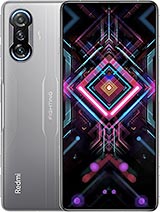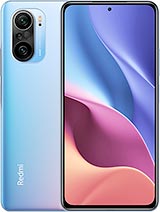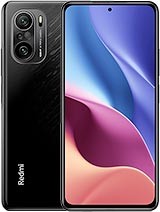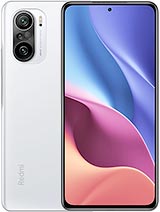Xiaomi Redmi K40 Full Review: The Budget flagship killer in 2021 By gizmochina
We previously reviewed the Motorola edge s, the first phone with the snapdragon 870 chips, it's possible that you weren't quite satisfied with its overall performance of that phone. At the time it was the only snapdragon 870 phones launched in the market, so you didn't have a choice, but now Redmi gives you a brand-new option: the Redmi k40 without further ado. Let's see how Redmi's breakout model the k40 performs in real life. The Redmi k40 comes in a regular sized box. The charger and cable that disappeared from the mi 11s box reappear in the k40 box. A 33 watt charger is included, and we'll talk about the charging part later at first glance itself.
You realize that the k40 is much more refined than the k30. It weighs only 196 grams and is 7.8 millimeters thick. The whole back is a continuation of the design. The camera module is elongated, and the elements are distributed more evenly. This makes the back look much better than its predecessor, the red and blue gradient.
Color is the main color of the k40. It reflects blue and red in different lights. While this is not the first time that we have seen this color, if you are a person that likes a design that stands out, you will definitely like it. The side fingerprint sensor embedded into the power button is a bit raised. This differentiates the phone from the previous side, fingerprint recognition phones, which featured a sensor that was situated in a groove on the side.
The advantage is that it is more integrated into the frame and looks like a normal power button, and this makes it easier to press with your finger overall, the design of the k40 is a definite improvement. It's even better looking than the mi 11. This should be the first time that Redmi is on par with Xiaomi. In terms of design. This year the k40 series uses a flat e4 1080p 120 hertz, refresh rate OLED screen.
The screen is one of the main selling points of the k40 series, featuring 1300 nits of peak brightness, and a 5 million to 1 contrast ratio while consuming 15 percent less power. The performance is truly outstanding and with support for a three-finger 360hz touch sampling rate, the multi-finger control should be more responsive than other phones, but the improvement is more visible to the user and translates to a better real-life experience. So it's not just upgrades on paper. There are two obvious points of improvement in the screen. Experience of the k40 first one is the tiny 2.76, millimeter hole, punch and, second, is the adaptive color display. This is one of the smallest hole punch.
We've seen allowing you to almost ignore the front camera and immerse yourself in the joy of video. As for adaptive colors, it is not a strange concept for iPhone users. It adjusts the color temperature of the screen to the color temperature of the ambient light. This feature can help reduce eye strain apart from the plastic frame and the wide bezels. The screen for the price point is excellent, as you might have already seen in our Motorola edge s review.
The snapdragon 870 is a very well-balanced chip. As a long time, Qualcomm customer will Redmi be able to tune the snapdragon 870 any better. Let's look at the regular benchmark results. First, the phone scores the following in benchmark tests: an tutu score is 662, 201 3dmark score is 4092 and geek bench.5 single core tests is 1034 and a multi-score test is 3485. We can see that the k40's peak performance tuning is similar to the edge s.
Now, let's look at the tuning optimization for sustained performance output in the gentian impact. Half an hour stress test. The phone ran at 50.45 fps a little higher than the edge s, although judging from the frame rate curve, Redmi's, k40 and edge's s gaming performance look about the same, but looking at the frequency of lag, the k40 seems to be more consistently tuned. Now, let's take a look at the bright ridge 20 minute test, in which the k40 got an average of 42 fps. This is lower than the edge s and there were a few times when the frame rate was only about 20 frames.
After down throttling. The experience was not very good, so it looks like for games that were optimized for the Redmi model. The phone offers a better gaming experience than the edge s and the temperature. Never went above 50 degrees Celsius, but if there were no targeted optimizations, the gaming experience would be inferior to the edge s. Given its price segment, we knew the cameras were going to be average, so we brought in the edge s in its class for a fair comparison.
Let's see how good it is at taking photos, k, 40s, main camera is the mix 582 sensors introduced the year before, and there is no optical stabilization. The ultra-wide angle sensor is 8 megapixels and there's a 5 megapixel telephoto macro lens of the same type as the me11 in real life. The k40's primary camera underexposed samples in daylight conditions, dynamic range- is also not good with serious loss of detail in dark areas. Colors are also not vibrant enough. The resolution is also inadequate.
Apart from the slightly better control of the purple fringing issue, the k40 loses out in all daytime scenes. So can the k-40 pull it off at night scenes at night the k-40s exposure returns to normal. Although the highlights still spill over, there is much less noise than the edge s with almost the same resolution. There is also more detail in the dark areas than in the edge s. This was applicable with night mode on as well.
Although the edge s has improved its exposure in extreme dark lighting conditions, the noise is still not reduced, so the nighttime camera performance is a small victory for the k40, both phones ultra-wide lenses, perform the same as the main camera in daylight. The k40 didn't do well and was defeated in this department. Since the results were the same, I won't repeat myself at night. The k40 achieves another comeback. It wins across the board, except for the small range of highlight suppression, which sometimes was not very good.
If you turn on night mode, the gap will widen even more. The k40 uses a separate special lens for macro shooting, so the focus distance is much closer than the edge s. This is why the results are particularly impressive. As for video, I just want to remind you that the k40 does not have 6k video on its main camera.4K only supports 30fps, both the edge s and the k40 only support up to 1080p 30fps from its ultra-wide camera. The k40 comes with a 4520 milliampere hour battery after our test, which was half an hour of tick, took and half an hour of 1080p internet video both use only five percent of the power 30 minutes of the Genshin Impact consumes 18 20 minutes on the bright ridge consumes 20 percent.
This battery optimization is still good, although the k40 is still using 33 watts of charging they've optimized it a lot. This time it charges to 69 in half an hour and can be fully charged in 54 minutes. So this is faster than many other brands.40 watt charging. So you don't have to worry at all that the 33 watts of the k40 won't be enough to conclude. If you're looking for a phone with high performance, low heating and not so demanding camera, the k40 is perfectly suited for you.
There are even a few surprises, such as the excellent e4 screen and the sophisticated design given its drawbacks. It's not the best phone, but it'll still be the most comfortable phone you can buy in this price range, at least for now there have been a lot of new phones recently. So the competition will definitely get tougher in the coming months. Thanks for watching, please don't forget to subscribe to our channel and keep following us. This is Kieran from gizmo china, and we'll see you soon.
You.
Source : gizmochina




























